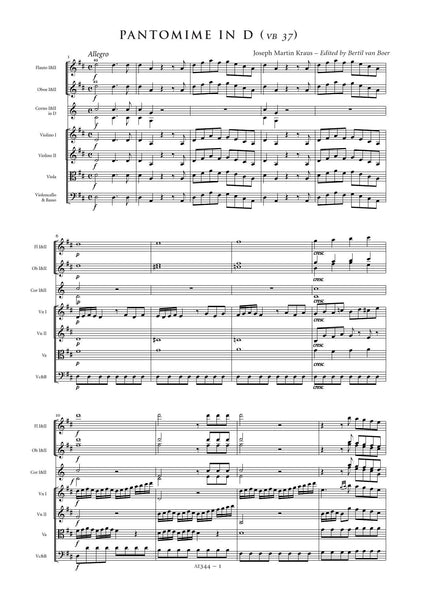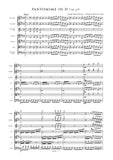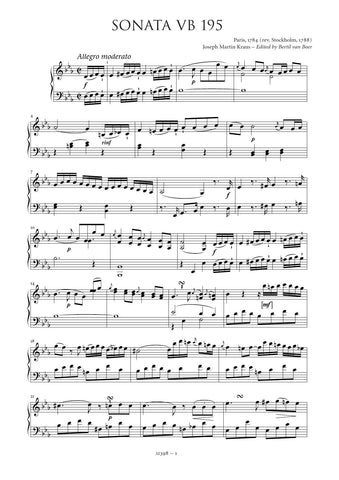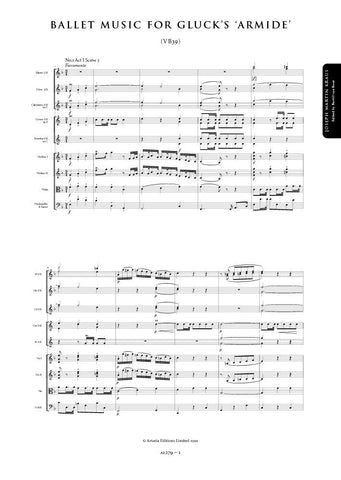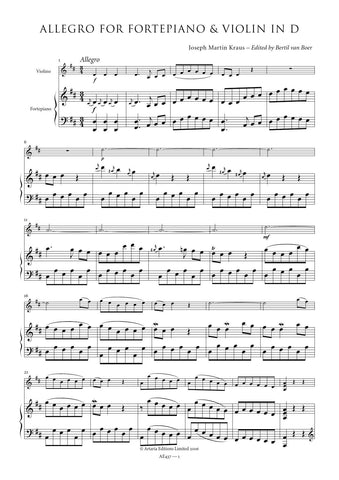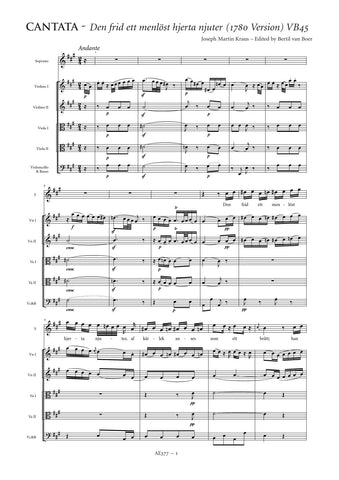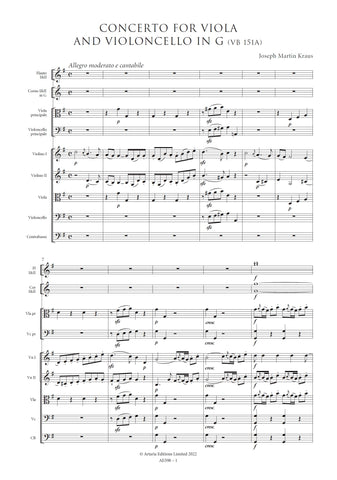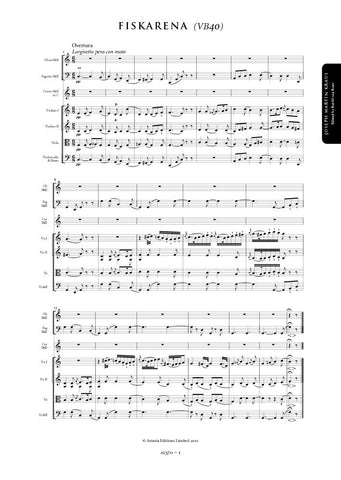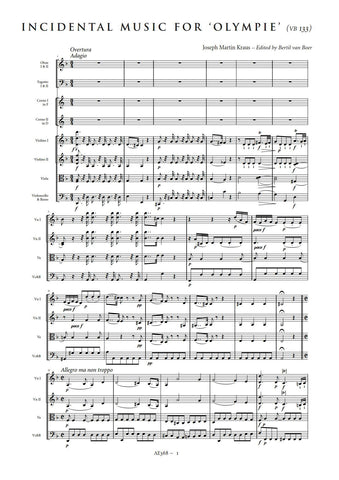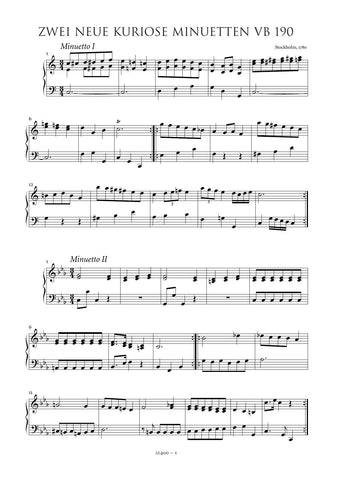Kraus, Joseph Martin: Pantomime in D major (VB 37) (AE344) – sheet music
Previous Product Next Product
Description |
Kraus, Joseph Martin (1756-1792)
|
||||||||||||||||||
Audio sample |
|||||||||||||||||||
Details |
The Pantomime in D (VB 37) is the more mature of these last two works, most likely composed for some celebration at the Jesuit Gymnasium and Music Seminar in Mannheim during the years 1769-1772. This was a period when the composer was beginning to learn his craft from the official teachers such as Pater Alexander Keck, as well as those composers of the famed Mannheim Court Orchestra who often taught pupils at the school, such as Franz Richter. From all the evidence, Kraus was an active participant in the varied cultural life of the Palatinate capital, singing roles in various student operettas, performing on the violin, enthusiastically promoting German literature, and showing an aptitude for musical composition. Keck noted with pride that, when he was too busy to complete a "Musik-Spiel" (a sort of student operetta), he gave the nod to his prize pupil Kraus, who completed the work with great skill. Although the circumstances of the two pantomimes that survive from this period are not known, it is likely that they represent efforts to provide music for the annual pantomime scenes that occur during the Carnival season. The three-movement Italian style work may have been the opening to one of these events. There exists only one source for both Pantomimes, a score in the Silverstolpe Collection at Uppsala, Sweden in the Universitetsbibliotek (Capsula 24). A note on the cover indicates that the copy, in the hand of a Viennese professional, was done in 1802 at the behest of Fredrik Silverstolpe, Kraus's first biographer. From evidence provided by an extensive correspondence between the Swedish diplomat and Kraus's sister Marianne, who provided either a copy or the autograph parts themselves, these pieces are some of the few from Kraus's early years to have survived. The copy is inconsistent in terms of detail, a contrast to the usual precise calligraphy of the composer, and is generally devoid of dynamic markings altogether. The instrumentation is curious; in the first movement the composer notes on the first oboe part "vel flauto", a designation that is expanded to "vel flauti" in the third. This is interpreted as a doubling, although the first high entrance in the third movement (up to f ''') would seem to favour flutes alone at that particular instance, given that this is the very top of the 18th-century oboe range, and certainly a note of this extreme register would be cautiously approached by a composer. I have chosen to separate out the parts. There are very few articulation markings in the work, and where they do exist, they are sporadic and inconsistent. These have been incorporated where there is a clear indication; parallel passages, however, have been left without markings. Slurrings, also extremely inconsistent, have been cautiously regularized where there are clear indications in the source of the composer's intent. All appoggiaturas have been linked to their principal note with a slur. The few patently wrong notes, the mistakes clearly of the copyist who may not have been a musician himself, have been tacitly corrected as have inconsistencies in the placement of the few dynamic markings. Of particular note is the set of parallel fifths between the first and second violins in the second movement; since this appears twice, it would seem that it is deliberate, a musical-dramatic moment that gives the lilting movement an old-fashioned favour. In the final movement a trill has been added to the flute/oboe and violin parts in the second section, which seems in context, although none is indicated in the original score. Bertil van Boer |
||||||||||||||||||
Performance |
16 September 2012 Conductor: Manfred Hermann Lehner Norddeutsche Philharmonie Rostock Hotel Neptun, Bernsteinsaal - Warnemünde - Germany |




